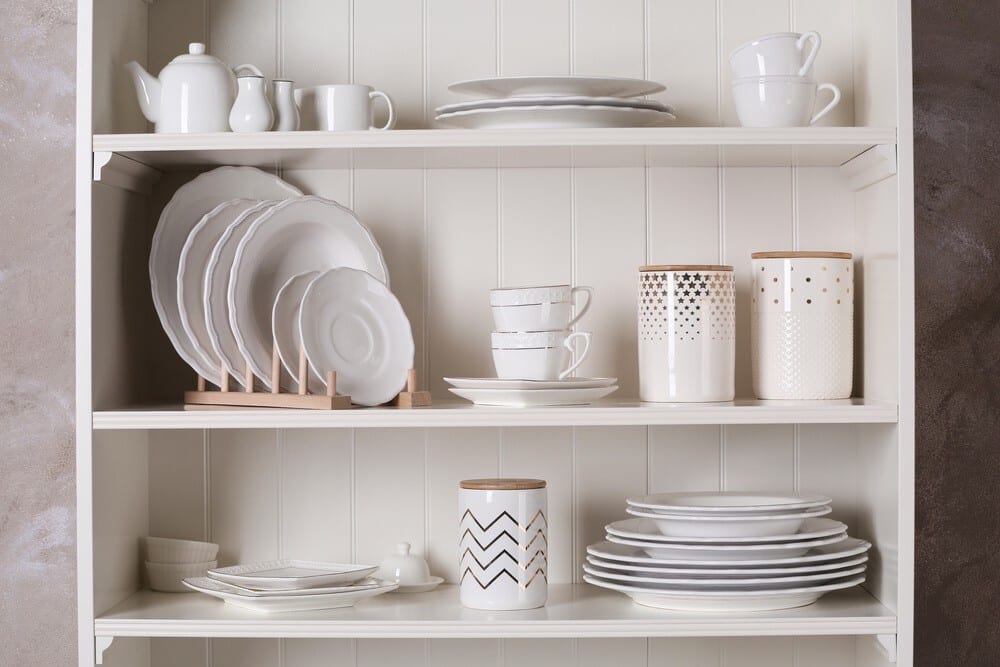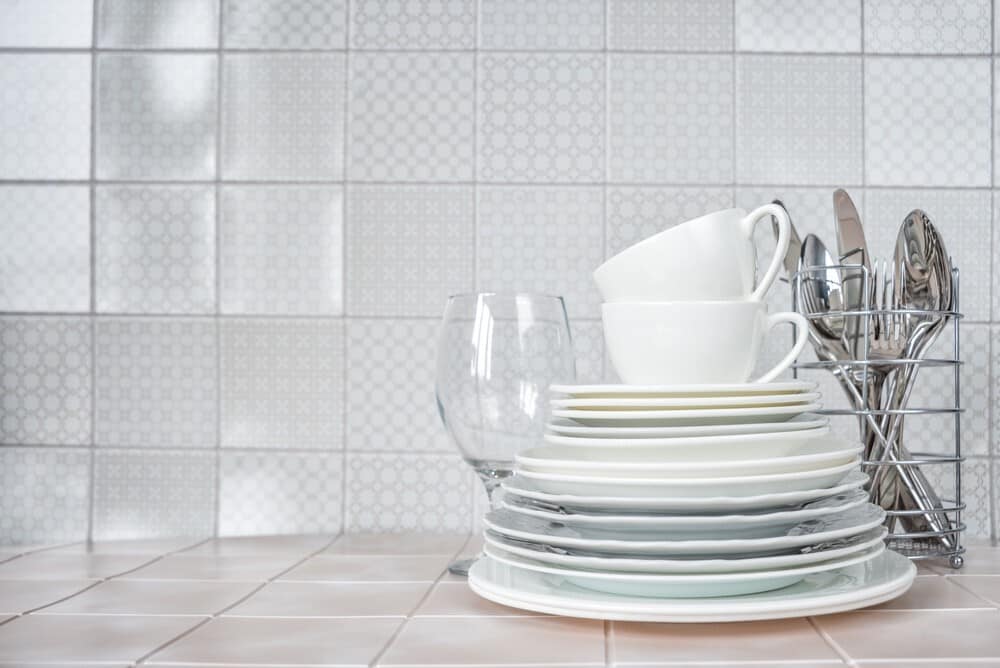Your search for the best pots and pans is over. We did all the hard work of testing and reviewing, and we found that ceramic nonstick cookware is far superior to porcelain — but not just for food; we’ll tell you why in this post.
While cooking with ceramic makes it easier than ever to cook delicious meals without having to add dangerous aluminum or Teflon-coated cookware, what’s even more important is the way it protects your own health. Ceramic cooks at a lower temperature than porcelain, so it doesn’t emit toxic fumes while cooking on stovetop burners and in ovens.
Table of Contents
ceramic vs porcelain cookware: Their differences

1. Heat retention
Heat is retained in ceramic pots and pans better than porcelain. Ceramic is also safer because it heats more evenly, so you won’t burn your food or risk your food burning on stovetop or in an oven. While porcelain will heat up fast, the high heat tends to transform the nonstick coating into toxic fumes.
2. Foods taste better
Ceramic cooks more evenly, so that means that your foods will cook more evenly too. You can expect foods to be crispier on the outside and soft on the inside, which is especially noticeable with fried foods like french fries.
3. Ceramic is a lot safer
While cooking with ceramic gives you the nonstick convenience of porcelain, it’s also a lot safer. With porcelain, there’s a chance your food is going to come in contact with toxic fumes or chemicals from overheated nonstick coatings. Ceramic cookware doesn’t have this problem because they heat up to a lower temperature and they don’t emit toxic gasses while they’re heating up.
4. Ceramic is more durable
Ceramic is far more durable than porcelain and it will last you an entire lifetime if properly taken care of. Ceramic is nonstick and very durable, meaning that it’s tougher and more resistant to heat than typical bakeware. Ceramic also won’t deplete like typical porcelain cookware, which gets blacker and blacker with time.
5. Ceramic can be cleaned easily
Ceramic cookware will not crack or chip when scraped against the ceramic surface. With porcelain, pieces of clay could break off during a scraping, where a scraped ceramic will not chip or crack. Ceramic is also dishwasher safe while porcelain is not.
6. Ceramic is naturally nonstick
Ceramic naturally stays nonstick without the need for adhesives or coatings. With porcelain, you have to apply a coating to keep your food from sticking. Most of the time, it’s done with TEFlon, which has been known to cause cancer in lab animals. Ceramic is naturally nonstick so you don’t have this problem with ceramic cookware.
While porcelain can be inexpensive, it’s actually very dangerous to use because the fumes are toxic and could even be carcinogenic depending on what type of porcelain you’re using.
Frequently Asked Questions
Is porcelain safer than ceramic?
Porcelain is a type of ceramic, meaning that both have a similar composition and they both use a form of the natural mineral quartz. Porcelain won out over ceramic because it’s safer to use since it doesn’t have harmful chemicals or fumes.
The problem with porcelain is that the temperature at which the nonstick coating begins to break down into toxic fumes is incredibly high, which means that if you’re using your cookware on your stovetop or in your oven, you could be poisoning yourself.
Porcelain can also break apart into carcinogenic fumes that are harmful to humans if it breaks apart at temperatures above 700 degrees Fahrenheit; this temperature occurs with temperatures ranging from 450-900 degrees Fahrenheit.
Is porcelain plate better than ceramic?
Most types of porcelain plates are not any better for your health than ceramic plates. You still have to worry about toxins from a nonstick surface if the surface begins to break apart at high temperatures.
Most porcelain dinnerware is made with china clay, which gets blacker and blacker with age, making it much more susceptible to cracking and shattering into small pieces that could be ingested. Porcelain plates can also increase your risk for cancer because small amounts of nanoparticles from the plate could be eaten in food before being inhaled in fine particles when you’re washing dishes. Ceramic plates do not contain any toxic chemicals or fumes and they do not impair your health at all when used properly.
Is ceramic cookware the healthiest?
As of right now, there’s no evidence that ceramics are safe when used with food. The ultra-hot temperatures from the ceramic surface when you use your cookware on your stovetop or in an oven can destroy these toxic fumes and cause you to be exposed to dangerous chemicals.
Most types of ceramic cookware don’t heat up as low as traditional nonstick cookware, which often have temperatures ranging from 400-900 degrees Fahrenheit. These higher temperatures could cause cancer in humans because it could create a carcinogenic substance when a small amount of nanoparticles in the nanoporous ceramic kitchen pot breaks down to create a carcinogenic substance.
Is ceramic cookware better for you?
Ceramic cookware is a lot safer for humans because it heats up to a lower temperature and it doesn’t break down into toxic particles when used with high temperatures. Ceramic is nonstick cookware, making cooking easier since you don’t have to worry about your food sticking to the surface. Ceramic pots and pans are also more durable than porcelain cookware, which means that they’re going to last longer while looking just as good as new.
Porcelain cookware pros and cons
Porcelain is very common and it’s one of the cheapest types of nonstick cookware. Porcelain is easy to find in kitchen supply stores. Porcelain is very affordable, which can make it more appealing than ceramic cookware.
Porcelain saves you time since you don’t have to apply any coatings or adhesives to make your cookware nonstick. Ceramic doesn’t require anything except for some light washing, which is why porcelain pots and pans are commonly found in dorm rooms or kitchen cabinets without proper appliances.
As far as durability goes, porcelain only lasts a few years while ceramic will last for decades if taken care of properly. Porcelain is also more expensive than ceramic cookware. Ceramic pots and pans are not as common as porcelain, which could make them more expensive to purchase.
Porcelain cooks faster than ceramic, which makes it easier for people to use their pans faster and faster as they become seasoned with cooking. Porcelain cooks evenly since it heats up evenly, while ceramic tends to heat up unevenly because of its natural rough surface. Some types of porcelain can take a good amount of time to heat up completely and evenly like every other type of nonstick cookware (ceramic and Teflon-coated ones).
Disadvantages of porcelain enamel cookware
Porcelain is a very fragile cookware material. A simple knock or bump against a ceramic surface could make your porcelain crack, chip, or shatter. Porcelain also has a higher chance of chipping and cracking from sudden changes of temperature compared to ceramic.
Because porcelain is made with china clay, it can actually become more brittle over time as the nonstick coating wears off and the surface begins to blacken. You’ve probably experienced how potholders can begin to burn you over time as you use them too much; this is the exact same thing that happens with porcelain.
Porcelain vs ceramic plates durability
The durability of porcelain compared to ceramic plates is almost the same, except for the fact that ceramic plates can last significantly longer than porcelain plates.
The life expectancy of the porcelain enamel coating depends on how often you cook with your pan or plate, but it’s around two to three years against about 10-15 years for ceramic. It’s important to note that different types of china clay for porcelain can be more durable than others, which is why these pans last longer.
Ceramic vs porcelain baking dish
A porcelain baking dish has the same durability as a baking dish made from ceramic or metal. Each baking dish can last for decades if properly cared for. Porcelain baking dishes wear down over time, just like their ceramic counterparts over time. The porcelain dish will have to be replaced when it breaks apart at high temperatures from being used in the oven or when it begins to blacken from everyday use in a standard oven setting. The same thing can happen with a ceramic baking dish if you use it in your oven too long.

